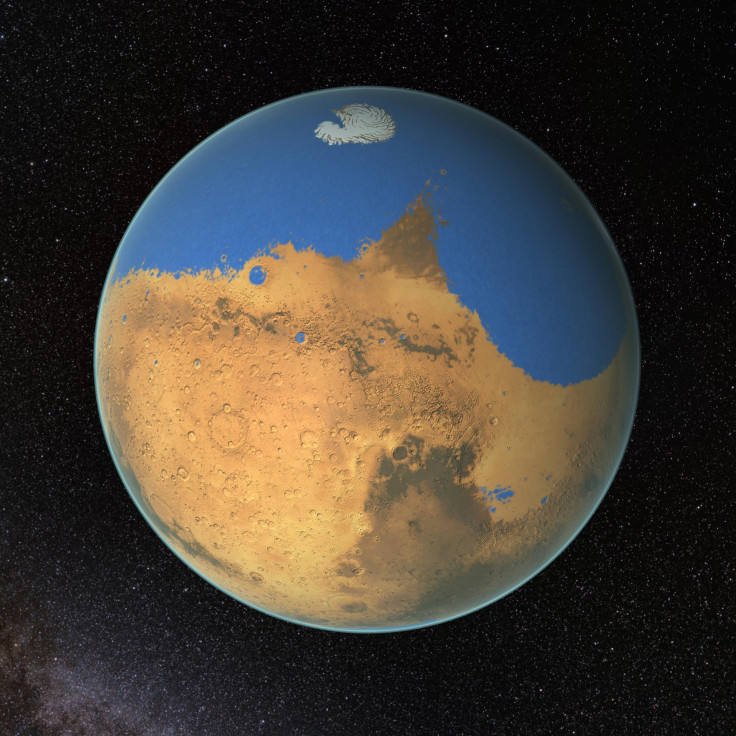Ancient Martian Ocean Held More Water Than The Arctic

Since the dawn of mankind, humans have looked up at the night sky and seen the planet Mars as a bright, orange-red star, appearing so because of the presence of iron oxide on its surface and the complete lack of liquid water. However, the red planet wasn’t always so, according to a recent study published in the journal Science.
Scientists have long believed that, in the distant past, Mars had liquid water on its surface. However, until now, they did not have an estimate of exactly how much water the planet’s surface actually held. The latest study, conducted by a team of scientists from NASA and the European Southern Observatory in Munich, gives a solid estimate, providing a better understanding of the history and fate of Martian water.
About 4.3 billion years ago -- 200 million years after the formation of Earth -- Mars had enough water to cover its entire surface in a liquid layer about 450 feet deep, much more water than the Arctic Ocean currently holds. This water would have formed an ocean that covered almost half of Mars’ northern hemisphere, which is a relatively flat region but has a lower elevation compared to the rest of the planet. Only 13 percent of this water remains on Mars today, frozen solid in its polar ice caps.
“This ocean had a maximum depth of around 5,000 feet, or around one mile,” Geronimo Villanueva, a scientist at NASA’s Goddard Space Flight Center and lead author of the new paper, said. “It’s deep -- not as deep as the deepest points of our oceans -- but comparable to the average depth of the Mediterranean Sea.”
In order to determine how much water was there on Mars, scientists used Earth-based instruments to distinguish the chemical signatures of two slightly different forms of water in Mars’ atmosphere --H2O, which is normal water, and HDO, which is the “heavier” version of water with the hydrogen component of the liquid containing a neutron in the nucleus.
Infrared maps showed that water near the Martian ice caps is enriched with HDO, or deuterium. By comparing the ratio of HDO to H2O in the water on Mars today, with the ratio in the water trapped in a 4.5 billion-year-old Martian meteorite, scientists determined how much water had escaped into space.
So how did this ocean, which once occupied 19 percent of the planet’s surface, vanish off the face of Mars? As the planet lost its atmosphere over billions of years, the resulting drop in pressure and temperature caused the water cover to shrink. The remaining water eventually condensed and froze, forming the ice caps in the north and south.
“With Mars losing that much water, the planet was very likely wet for a longer period of time than was previously thought, suggesting it might have been habitable for longer,” Michael Mumma, a senior scientist at NASA and the second author on the paper said, in a statement.
The latest findings indicate that Mars was a warm, wet world, much more hospitable to life as we know it, for longer than previously estimated. With gigantic oceans, winding rivers and lakes, the bright red planet might once have looked much like Earth does today -- a pale blue dot.
© Copyright IBTimes 2024. All rights reserved.






















